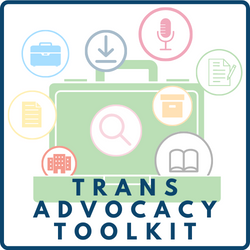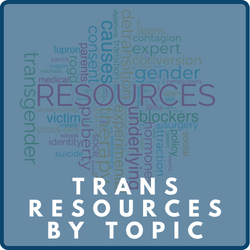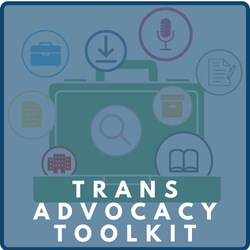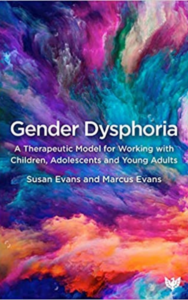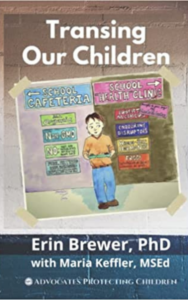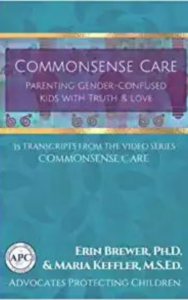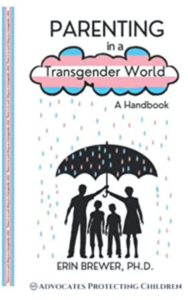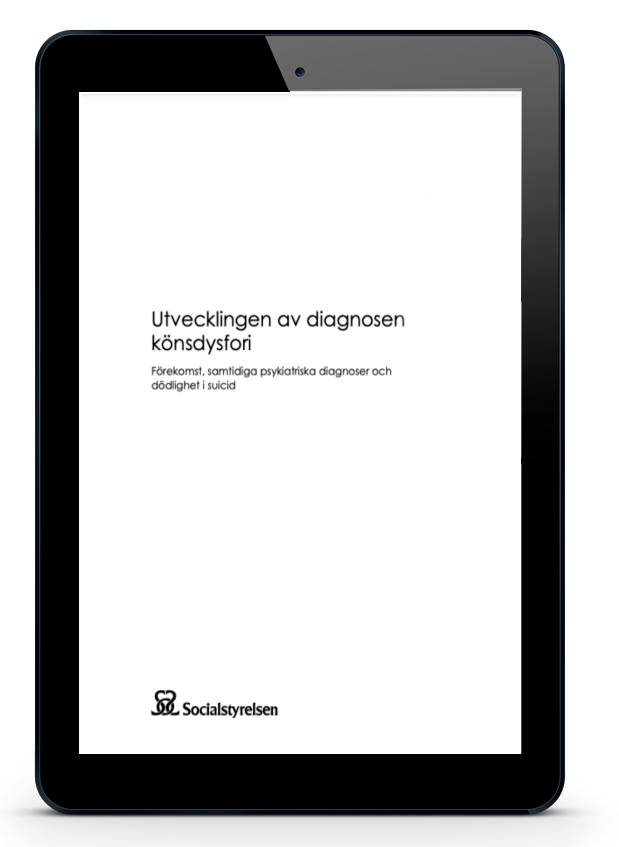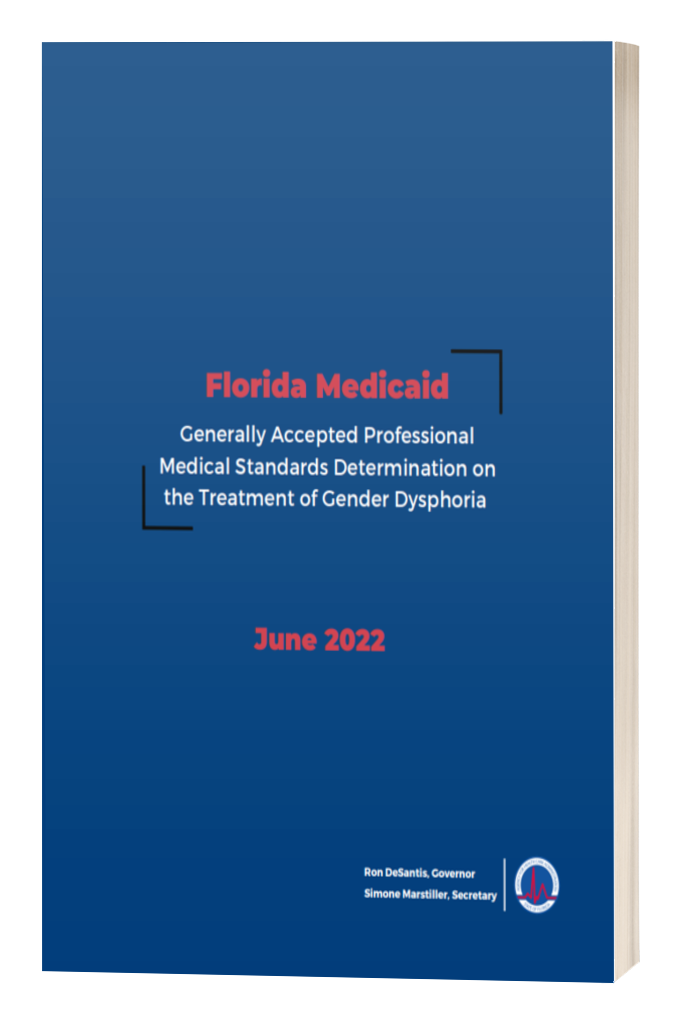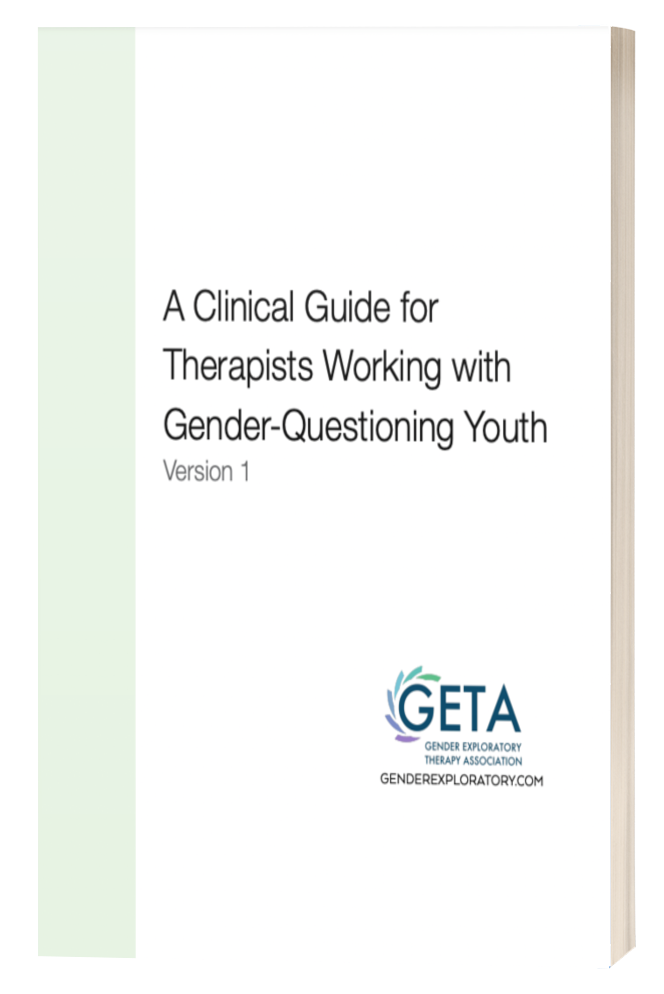UNDERSTANDING TRANSGENDER ISSUES
Resources by Topic
PUBERTY BLOCKERS | CROSS-SEX HORMONES | SURGERY | CONSENT | POTENTIAL CAUSES | ROGD | SUICIDE | SOCIAL TRANSITION | MEDICAL TRANSITION | SOCIAL CONTAGION | PARENTAL RIGHTS | POLICIES | EXPERIMENTATION | LEGISLATION | SOGI | WOMEN’S SPORTS | PUBLIC ACCOMMODATIONS | BIRTH CERTIFICATES | INTERSEX/DSD | COMPELLED SPEECH | AFFIRMATION | GENDER DYSPHORIA | DESISTERS/DETRANSITIONERS | THERAPY BANS
Medical Transition
Books
Videos
Gender Dysphoria in Children: A Cry for Help Not Hormones
The Boyce of Reason
Commonsense Care
Dysphoric
Medical Harms from the Treatment of Child and Adolescent Gender Dysphoria
NHS child gender clinic: Staff welfare concerns ‘shut down’ – BBC Newsnight
The Rise of Transgender Medicine
Detransition Conference and medical ethics in the age of gender identity
ROGD Webinar
Trans Mission
Trans Train
Utah House Judiciary Committee Hearing Highlights on HB 399
Gender
Michelle Cretella
Organizations
Guides
Research
Transgender and Gender Diverse Children and Adolescents: Fact-Checking of AAP Policy
The American Academy of Pediatrics (AAP) recently published a policy statement: Ensuring comprehensive care and support for transgender and gender-diverse children and adolescents. Although almost all clinics and professional associations in the world use what’s called the watchful waiting approach to helping gender diverse (GD) children, the AAP statement instead rejected that consensus, endorsing gender affirmation as the only acceptable approach. Remarkably, not only did the AAP statement fail to include any of the actual outcomes literature on such cases, but it also misrepresented the contents of its citations, which repeatedly said the very opposite of what AAP attributed to them.
Correction to Bränström and Pachankis
After the article “Reduction in Mental Health Treatment Utilization Among Transgender Individuals After Gender-Affirming Surgeries: A Total Population Study” by Richard Bränström, Ph.D., and John E. Pachankis, Ph.D. (doi: 10.1176/appi.ajp.2019.19010080), was published online on October 4, 2019, some letters containing questions on the statistical methodology employed in the study led the Journal to seek statistical consultations. The results of these consultations were presented to the study authors, who concurred with many of the points raised. Upon request, the authors reanalyzed the data to compare outcomes between individuals diagnosed with gender incongruence who had received gender-affirming surgical treatments and those diagnosed with gender incongruence who had not. While this comparison was performed retrospectively and was not part of the original research question given that several other factors may differ between the groups, the results demonstrated no advantage of surgery in relation to subsequent mood or anxiety disorder-related health care visits or prescriptions or hospitalizations following suicide attempts in that comparison.
A Follow-Up Study of Boys With Gender Identity Disorder
This study reports follow-up data on the largest sample to date of boys clinic-referred for gender dysphoria (n = 139) with regard to gender identity and sexual orientation.
The Right to Best Care for Children Does Not Include the Right to Medical Transition
Refuting that any child has the right to medically transition
Debate: Different strokes for different folks
A gender social transition in prepubertal children is a form of psychosocial treatment that aims to reduce gender dysphoria, but with the likely consequence of subsequent (lifelong) biomedical treatments as well (gender-affirming hormonal treatment and surgery).
Cardiovascular Disease Risk Factors and Myocardial Infarction in the Transgender Population
Despite their growing number and increasing specific medical needs, there has been a lack of research on cardiovascular disease (CVD) and CVD risk factors in this population.
Psychiatry’s ethical involvement in gender-affirming care
To reflect on the role of psychiatry in authorising physical treatments for Gender Dysphoria and to examine the quality of evidence for gender-reassignment.
One Size Does Not Fit All: In Support of Psychotherapy for Gender Dysphoria
We agree with Turban et al.’s (2020) position that therapies using coercive tactics to force a change in gender identity have no place in health care. We do, however, take issue with their problematic analysis and their flawed conclusions, which they use to justify the misguided notion that anything other than “affirmative” psychotherapy for gender dysphoria (GD) is harmful and should be banned.
Outbreak: On Transgender Teens and Psychic Epidemics
Currently, we appear to be experiencing a significant psychic epidemic that is manifesting as children and young people coming to believe that they are the opposite sex, and in some cases taking drastic measures to change their bodies.
Puberty Blockers, Cross-Sex Hormones, and Youth Suicide
Lowering legal barriers to make it easier for minors to undergo cross-sex medical interventions without parental consent does not reduce suicide rates—in fact, it likely leads to higher rates of suicide among young people in states that adopt these changes. States should instead adopt parental bills of rights that affirm the fact that parents have primary responsibility for their children’s education and health, and that require school officials and health professionals to receive permission from parents before administering health services, including medication and “gender-affirming” counseling, to children under 18. States should also tighten the criteria for receiving cross-sex treatments, including raising the minimum eligibility age.
Gender dysphoria in young people: The Interim Cass Review and its implications for nursing
The aim of this editorial was to explore the implications for nurses of the initial published findings of the English ‘Independent review of gender identity services for children and young people’. The Review, led by paediatrician Dr Hilary Cass, was commissioned by NHS England. Its aim is to make recommendations on clinical management and service provision to ensure that the best model(s) for safe and effective services for children and young people who experience gender incongruence or gender-related distress are commissioned. The Interim Report was published in February 2022 (Cass, 2022) and represents the work of the Review to date. This work was instigated against a backdrop of growing international concern about the recent and very rapid growth in the numbers of children and young people presenting with gender dysphoria and how best to support them. Of particular concern has been the current model for care and role of medical and surgical intervention. Whilst findings and recommendations will only relate to England, they are likely to inform international opinion and reverberate well beyond that country.
Two Dutch studies formed the foundation and the best available evidence for the practice of youth medical gender transition. We demonstrate that this work is methodologically flawed and should have never been used in medical settings as justification to scale this “innovative clinical practice.” Three methodological biases undermine the research: (1) subject selection assured that only the most successful cases were included in the results; (2) the finding that “resolution of gender dysphoria” was due to the reversal of the questionnaire employed; (3) concomitant psychotherapy made it impossible to separate the effects of this intervention from those of hormones and surgery. We discuss the significant risk of harm that the Dutch research exposed, as well as the lack of applicability of the Dutch protocol to the currently escalating incidence of adolescent-onset, non-binary, psychiatrically challenged youth, who are preponderantly natal females. “Spin” problems—the tendency to present weak or negative results as certain and positive—continue to plague reports that originate from clinics that are actively administering hormonal and surgical interventions to youth. It is time for gender medicine to pay attention to the published objective systematic reviews and to the outcome uncertainties and definable potential harms to these vulnerable youth.
There are no laboratory, imaging, or other objective tests to diagnose a “true transgender” child. Children with GD will outgrow this condition in 61% to 98% of cases by adulthood. There is currently no way to predict who will desist and who will remain dysphoric. The degree to which GAT has contributed to the rapidly increasing prevalence of GD in children is unknown. The recent phenomenon of teenage girls suddenly developing GD (rapid onset GD) without prior history through social contagion is particularly concerning .
Aricles
Podcasts
Powerpoints
Policy Briefs
Other Resources
Ruling in THE TAVISTOCK AND PORTMAN NHS FOUNDATION TRUST case UK
This is a claim for judicial review of the practice of the defendant, the Tavistock and Portman NHS Foundation Trust, through its Gender Identity Development Service (GIDS) and the first and second Interveners (the Trusts) of prescribing puberty-suppressing drugs to persons under the age of 18 who experience gender dysphoria.
View



